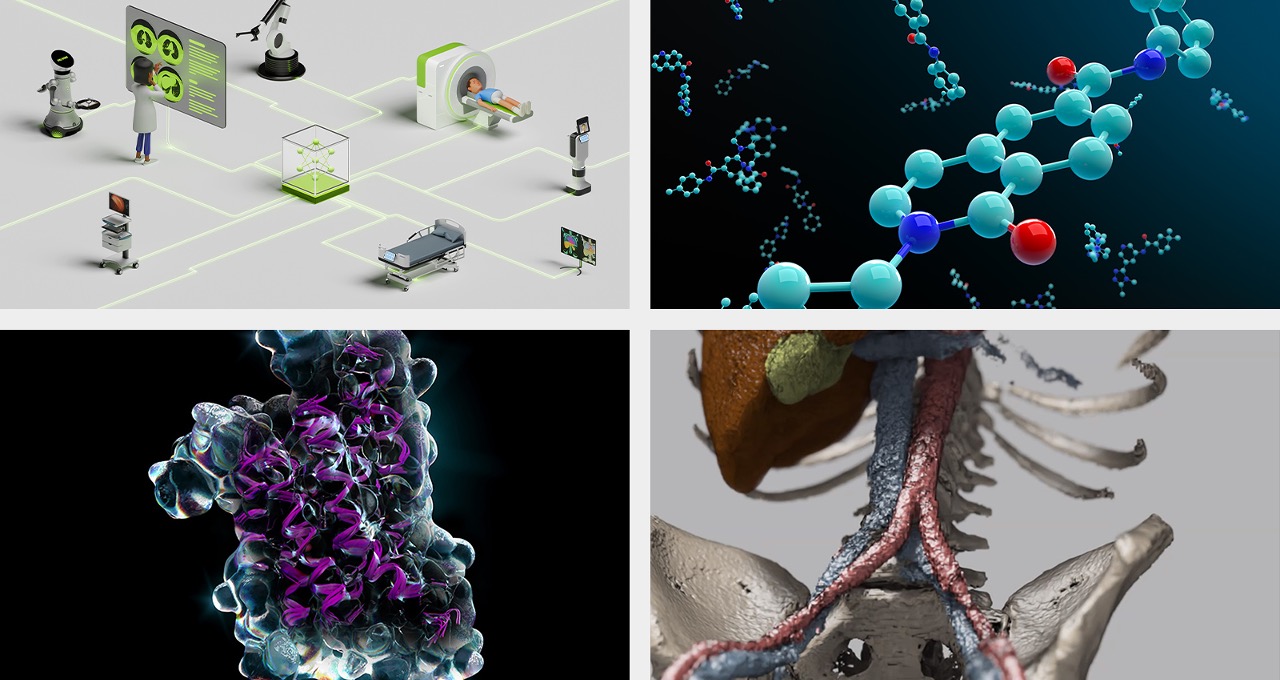
From analysis and discovery to affected person care and administrative duties, AI is displaying transformative potential throughout practically each a part of healthcare and life sciences.
For instance, generative AI can be utilized to assist automate repetitive, time-consuming duties similar to summarizing and creating paperwork and extracting and analyzing information from reviews. It may possibly additionally assist in drug discovery by discovering new protein buildings and provide help to sufferers by means of chatbots and AI assistants, easing the burden on medical and administrative employees.
This wide selection of purposes was amongst key insights of NVIDIA’s inaugural “State of AI in Healthcare and Life Sciences” survey.
The survey — which polled greater than 600 professionals throughout the globe from fields spanning digital healthcare, medical instruments and applied sciences, pharmaceutical and biotech, and payers and practitioners — revealed strong AI adoption within the trade, with about two-thirds of respondents saying their corporations are actively utilizing the know-how.
AI can also be having a tangible impression on the trade’s backside line, with 81% of respondents saying AI has helped improve income, and 45% % realizing these advantages in lower than a 12 months after implementation.
Listed below are a number of the key insights and use circumstances from the survey:
- 83% of total respondents agreed with the assertion that “AI will revolutionize healthcare and life sciences within the subsequent three to 5 years”
- 73% stated AI helps to cut back operational prices
- 58% cited information analytics as the highest AI workload, with generative AI second at 54%, and giant language fashions third at 53%
- 59% of respondents from pharmaceutical and biotech corporations cited drug discovery and growth amongst their high AI use circumstances
Enterprise Affect of AI in Healthcare and Life Sciences
The healthcare and life sciences trade is seeing how AI may also help improve annual income and cut back operational prices. Forty-one % of respondents indicated that the acceleration of analysis and growth has had a optimistic impression. Thirty-six % of respondents stated AI has helped create a aggressive benefit. And 35% have stated it’s helped cut back venture cycles, ship higher medical or analysis insights, and improve precision and accuracy, respectively.
Given the optimistic outcomes throughout a broad vary of AI use circumstances, it comes as no shock that 78% of respondents stated they intend to extend their price range for AI infrastructure this 12 months. As well as, greater than a 3rd of respondents famous their investments in AI will improve by greater than 10%.
The survey additionally revealed the highest three spending priorities: figuring out further AI use circumstances (47%), optimizing workflow and manufacturing cycles (34%) and hiring extra AI specialists (26%).
AI Utilized Throughout Healthcare
Every trade section within the survey had differing priorities in AI implementation. As an illustration, within the payers and suppliers trade section, which incorporates medical health insurance corporations, hospitals, medical providers and residential healthcare, 48% of respondents stated their high AI use case was administrative duties and workflow optimization.
For the medical instruments and applied sciences subject, 71% of respondents stated their high AI use case was medical imaging and diagnostics, similar to utilizing AI to research MRI or CAT scans. And for digital healthcare, 54% of respondents stated their high use case was medical determination help, whereas 54% from the pharmaceutical and biotech fields prioritized drug discovery and growth.
AI use circumstances anticipated to have probably the most important impression in healthcare and life sciences within the subsequent 5 years embrace superior medical imaging and diagnostics (51%), digital healthcare assistants (34%) and precision medication — therapy tailor-made to particular person affected person traits — (29%).
A Rising Dose of Generative AI
Total, 54% of survey respondents stated they’re utilizing generative AI. Of those customers, 63% stated they’re actively utilizing it, with one other 36% assessing the know-how by means of pilots or trials.
Digital healthcare was the chief in generative AI use, in keeping with 71% of respondents from the sphere. Second was pharmaceutical and biotech at 69%, then medical applied sciences at 60%, and payers and suppliers at 44%.
Amongst all generative AI use circumstances, coding and doc summarization — particular to medical notes — was the highest use case, at 55%. Medical chatbots and AI brokers have been second, at 53%, and literature evaluation was third, at 45%. One notable exception was throughout the pharmaceutical biotech trade section, through which respondents said that drug discovery was the highest generative AI use case, at 62%.
Obtain the “State of AI in Healthcare and Life Sciences: 2025 Developments” report for in-depth outcomes and insights.
Discover NVIDIA’s AI applied sciences and platforms for healthcare, and join NVIDIA’s healthcare publication to remain updated.

